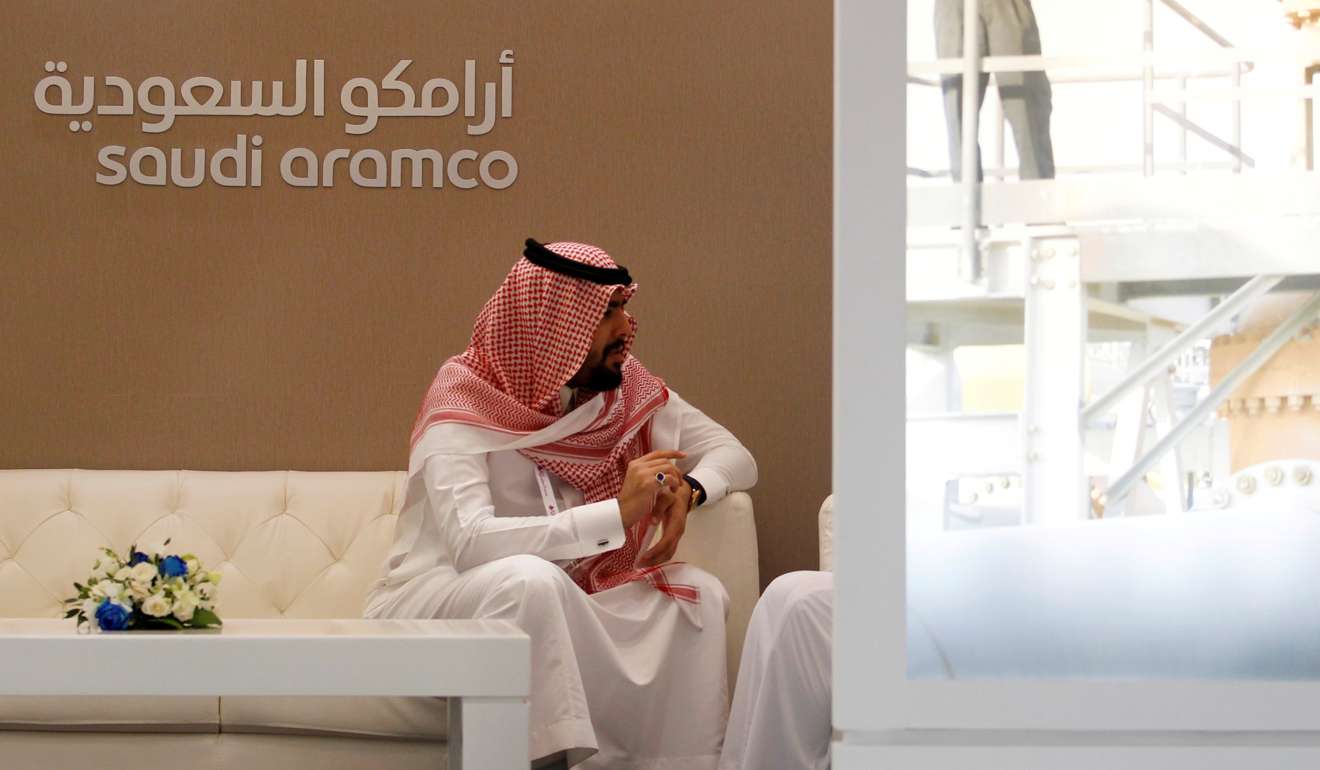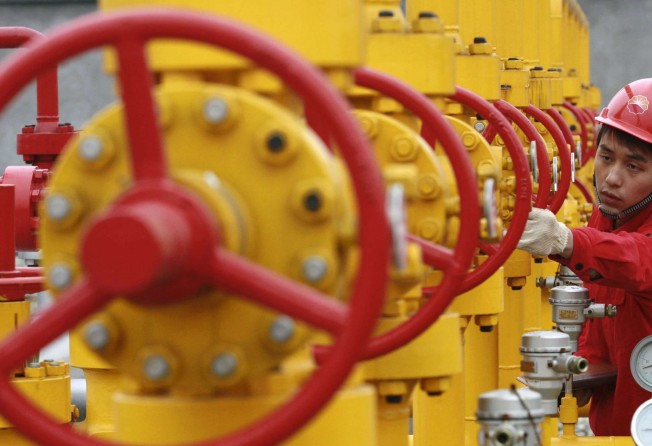
Why China’s Sinopec and Saudi Aramco cross paths in the international capital market

Sinopec, the world’s second largest oil refiner, and Saudi Aramco, the world’s largest crude oil producer, focus on different sections of the supply chain, but they share a common need to tap international capital markets as part of reform to enhance efficiency of state giants amid an uncertain outlook in the competitive oil industry.
Sinopec, formerly known as China Petroleum & Chemical, last Thursday said its board has approved a plan to separately list its fuel marketing unit, Sinopec Marketing, by selling around a 10 per cent stake to investors in an unspecified overseas stock market.
The deal “could help unlock hidden value” in the company, according to Sanford Bernstein senior analyst Neil Beveridge, who estimated two years ago the marketing unit to be worth 404 billion yuan (US$58.5 billion).
The listing exercise would see more of the firm sold to outside investors – a move aimed at improving its governance and helping it better tap new business opportunities – although Sinopec is expected to retain majority control. A 30 per cent interest was already been sold for 107 billion yuan to 25 investors in 2014.

An example of the diversification can be found in the fund’s US$45 billion commitment last December to the high-tech investment vehicle set up by Japanese telecommunications and internet giant SoftBank.
Meanwhile, Sinopec said it would use the listing proceeds to develop its fuel and emerging non-fuel retail business, besides “optimising its asset-liabilities structure,” which usually refers to a reduction in debt leverage.
The sale and public listing is part of Beijing’s latest round of initiatives to further reform state-owned enterprises to make them more efficient and market-oriented.
It is widely expected to be followed by a stake sale and separate listing of rival PetroChina’s natural gas distribution business, which management late March said has been undergoing restructuring, with further progress dependent on Beijing’s plan.
Profits for Saudi Aramco and PetroChina – and to a lesser extent Sinopec thanks to its downstream business focus – have been dented by the three year-old oil price slump, as US technological advancement has cut production costs and allowed more “unconventional oil” to be pumped from shale rock formations, forcing non-US producers to cut back output from high-cost fields.
Sinopec’s announcement last week came on the heels of regulator National Development and Reform Commission spokesman Yan Pengcheng’s indication that the so-called “mixed ownership” reform – the mixing of state and private capital in a state company – is being prepared for the oil and gas sector. Sinopec and PetroChina are among the third batch of pilot cases for China’s state enterprise reform.
In January the Saudi energy minister Khalid Al Falih told the World Economic Forum in Davos, Switzerland that Aramco’s listing is part of the kingdom’s wider reforms which aim for the private sector to account for 65 per cent of the economy by 2030, up from 40 per cent last year.
The listing would also help fund the nation’s budget deficit that amounted to around 20 per cent of its economic output last year, and improve efficiency of the state-owned behemoth, Beveridge said.
With oil demand likely to peak in the next 15 to 20 years, and Aramco sitting on 60 years of reserves, the listing could be part of a strategy to...minimise the risk of stranded oil reserves
“With oil demand likely to peak in the next 15 to 20 years, and Aramco sitting on 60 years of reserves, the listing could be part of a strategy to accelerate production and minimise the risk of stranded oil
reserves,” he wrote in a report.
As part of its pre-marketing of the planned shares sale, Aramco officials last month met management of both Sinopec and PetroChina about the latter two potential buying of Aramco shares and potential cooperation with the Chinese oil giants.
The cooperation includes Aramco’s interest in investing in an oil refining and petrochemical project being built by PetroChina in Yunnan province that is expected to come on stream in June, as well as potential deployment of PetroChina’s technology to enhance output of Aramco’s oil projects in Saudi Arabia.
Meanwhile, Sinopec, as the largest shareholder of its fuel marketing unit, stands to reap significant proceeds from the latter’s overseas listing.
The money would help fund projects both upstream – such as development of natural gas fields in the Sichuan region – and downstream where the energy giant has earmarked 200 billion yuan of expenditure in the five years to 2020 to enhance cost competitiveness of its fuel and base chemical plants amid competition from overseas rivals using cheap natural gas as feedstock.
This would see the establishment of four “world-scale” integrated oil refining and petrochemical bases, in Nanjing, Shanghai, western Guangdong and Zhenhai in Ningbo.
While outdated facilities will be shut down, a new 3.8 billion yuan plant will be built in a joint venture with Kuwait Petroleum in Zhanjiang, west Guangdong.
What is not clear, and what Sinopec’s spokesman remained tight-lipped about, is how it plans to build up the Zhenhai base’s refining capacity at 33 million to 38 million tonnes and ethylene output capacity at 1.8 million to 2.2 million tonnes by 2020.
Currently, the Zhenhai plant alone has 23 million tonnes of refining capacity and 1 million tonnes of ethylene capacity.
It is not known whether it will be achieved via expansion of the existing plant, building a new plant nearby or a merger with other Sinopec plants.